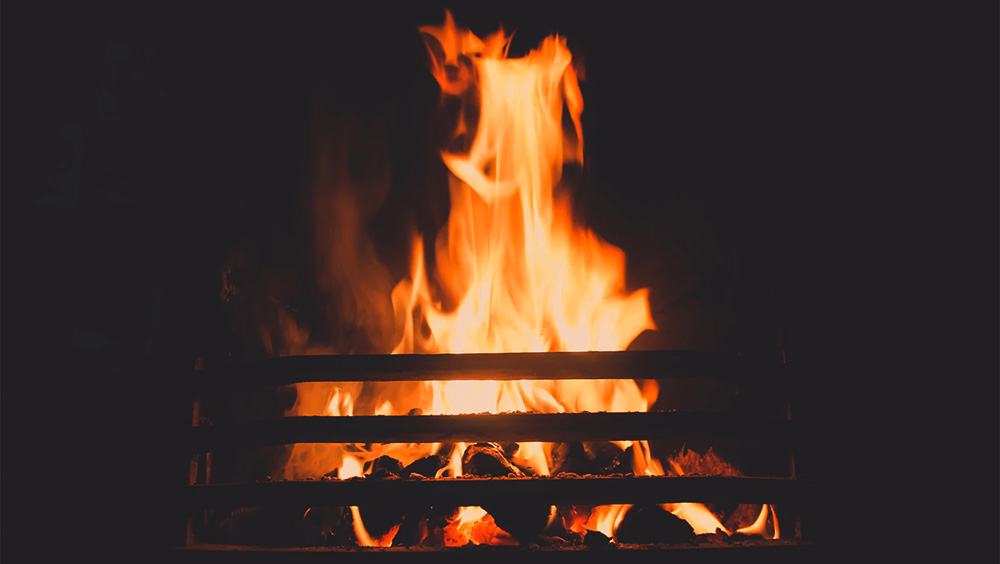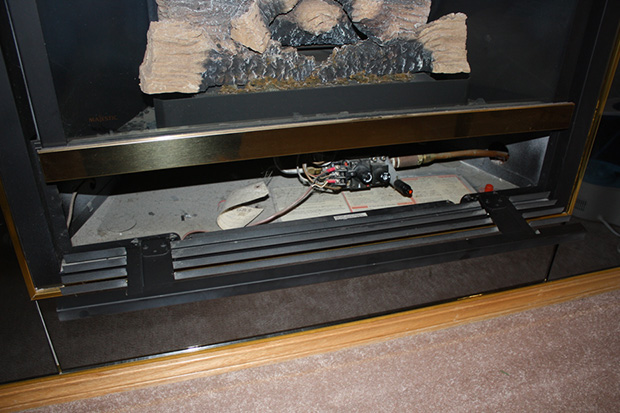The delight created by the fireplace has long held a special place in the hearts of homeowners. Often, on chilly evenings, you’ll find family and friends gathered round, sharing stories, laughing, and enjoying each other’s company.
When Your Fireplace Doesn't Start...
You’ve got that desire for the wonder brought on by the soft light, comfort, and warmth of the fire – until you flip the switch and your gas fireplace sits there silent, cold, and dark.
Racking your brain to fix the problem at hand, you vaguely remember something about lighting a pilot light; but where is that (sometimes, it’s “what is that!?”) and how do you do ignite it without “blowing something up”?
The “How To Start Your Gas Fireplace" Manual
There’s no need to fear. Fireplaces are extremely safe and we’re here to talk you through some steps to help you get your fireplace going.
Given the large number of fireplace & fireplace ignition types, the first place you should look for answers about your gas fireplace (like getting it started) is in your owner’s manual.
If you don’t have this, try searching for your fireplace’s manufacturer and reach out to their support.
That said, below are some quick, high-level steps we put together to help you get your gas fireplace started. (Chances are these steps won’t be quite what you need. Check your owner’s manual / manufacturer for more specific information.)
Steps To Light Your Gas Fireplace
First things first: Verify if you have a Direct Vent or B-Vent appliance. If you do, start with Step 1. If you have gas logs, skip to Step 2.
Step 1 - Open the Access Panel
Remove the front plating or open the access panel on your fireplace appliance. For most units, that will be located at the bottom of the fireplace, just below the protective glass layer of the system.
Step 2 - Locate the Gas Supply Line
Locate the “Gas Supply Line”. Find the valve on the gas supply line and turn the valve so that it is parallel to the gas supply line.
Step 3 - Locate the Spark Ignitor
Next, locate the pilot assembly’s spark ignitor. It should resemble something like a little red push-button located near your flame control knob.
Step 4 - Make sure the Electrical System is OFF
Check the electrical switch or remote-control receiver on the pilot assembly’s spark ignitor and ensure the system is positioned “Off.”
Step 5 - Set the Valve Control Regulator to 'Pilot'
Find the valve control regulator. It should have the words, “On, Off, and Pilot.” Depress the knob and rotate it until the word “Pilot” is in the 6 o’clock position. Hold it in this position.
Step 6 - Ignite the Pilot Light and then switch it to "On"
Locate the igniter button near the valve regulator control and press the button down at 1-second intervals until the pilot is lit.
Once the pilot has been lit, hold the valve control knob in position for 1 minute and then slowly position the valve control so that the “On” position is at the 6 o’clock.
Step 7 - Turn On the Electrical Switch / Remote-Control Receiver
Return the electrical switch or remote-control receiver and position the system into the “On” position.
Step 8 - Replace/Close the Access Panel
Replace the front plating or close the access panel to its original alignment.
What if my gas fireplace still doesn't light?
You may run into some issues when trying to get your fireplace started – as in, the fireplace won’t light!
It’s okay.
Pause.
Grab your phone and google your local fireplace service technicians.
Read reviews to find a respectable technician.
Give them a call.
Your fireplace technicians will have the resources and expertise needed to get your fireplace working again, both quickly and safely.
What if I want to try and fix it myself?
We’ve got to say this so you’re protected (and, so we are too):
You’re dealing with fire and gas. If something is actually wrong with your gas fireplace system, outside of the few trouble-shooting areas below, we highly recommend you reach out to a professional.
That said, should you choose to try and fix your fireplace yourself, start with these few areas of troubleshooting:
- Check that the gas supply line is open/activated.
- Check your remote starter’s batteries.
- Check to see if you need to light your pilot.
Enjoy. Delight. Relax.
Ahhhh…
Take a deep breath. Let it all go.
Your fireplace should be a place of contentment, delight, and comfort for you and your family. If it’s causing you trouble, let us know. We’re ready to help.
Wait, What If My Pilot Light Doesn’t Stay Lit?
(Warning: this additional section gets pretty technical and can be a lot to chew on. Read at your own risk!)
The major reason pilot lights don’t stay lit is due to a faulty thermocouple.
Thermo-what?
Thermocouples generate an electrical charge that holds open a magnet inside of the valve. Over time, the thermocouple degrades and the charge becomes progressively less strong until it reaches a point that your pilot light will not stay lit.
One other reason pilot lights go out is due to excessive wind turbulence in the fireplace. This can be remedied by looking at the termination or windshield on the outside of the home.
Lastly, and most rarely, the gas valve can go bad. If you have exhausted all the possible reasons your pilot light is going out, this could be the culprit. This is a complex process to replace and recommend seeking a professional to help.
The actual reason for why your pilot light won’t stay lit can be a pretty complex one (try reading the paragraphs above without your eyes glazing over)…
Because of this, we recommend contacting your local chimney and fireplace professionals before trying to fix these issues yourself.
Charlie & The Chimneys Plus Team
Want a Free Guide To Help You Start Your Fireplace?
Our team has put together an easy-to-read, helpful guide, The How to Light Your Gas Fireplace Manual, to walk you through the steps of starting your fireplace. Click below to download.
Related Posts
Nothing found.




